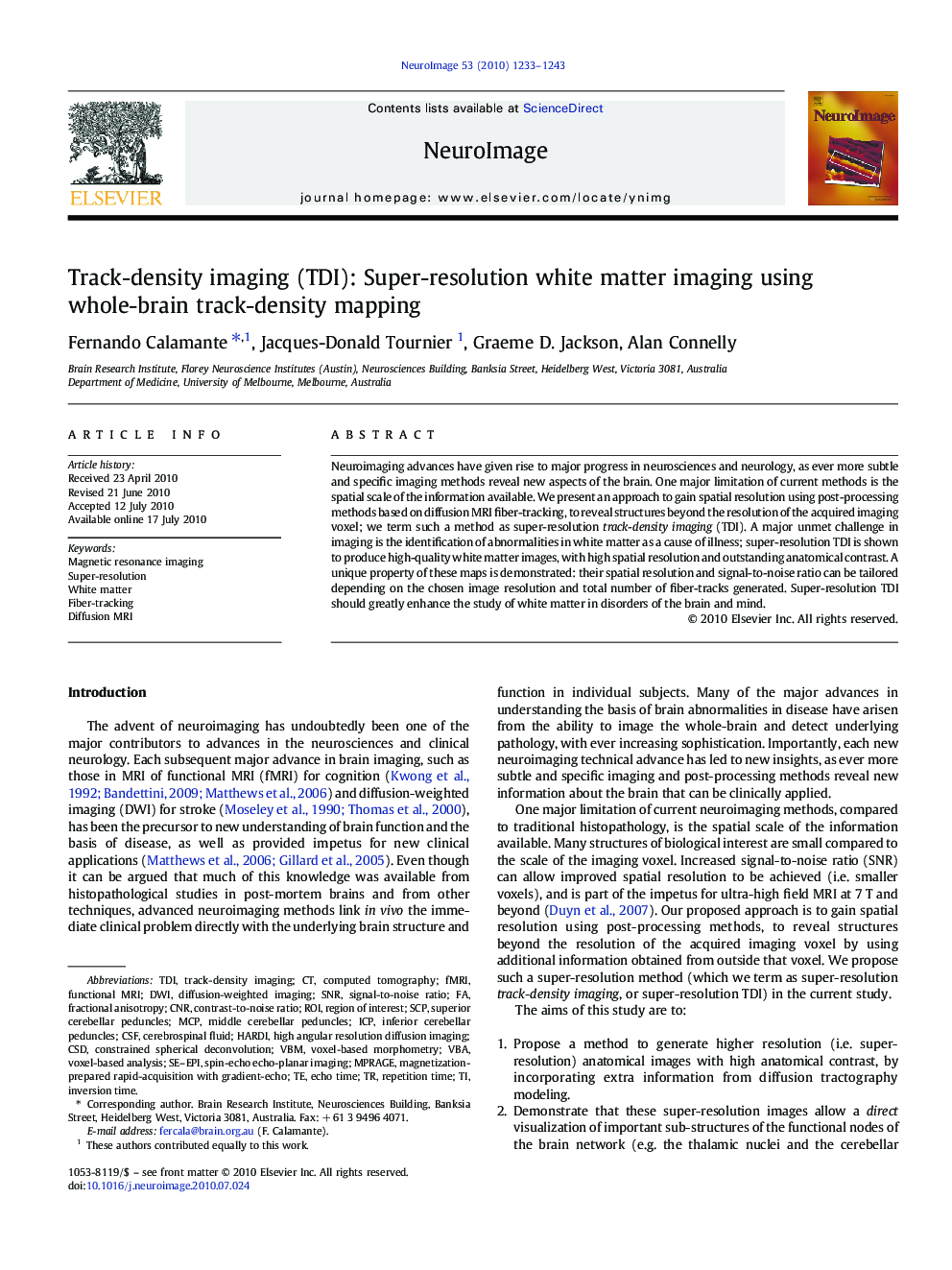| Article ID | Journal | Published Year | Pages | File Type |
|---|---|---|---|---|
| 3072307 | NeuroImage | 2010 | 11 Pages |
Neuroimaging advances have given rise to major progress in neurosciences and neurology, as ever more subtle and specific imaging methods reveal new aspects of the brain. One major limitation of current methods is the spatial scale of the information available. We present an approach to gain spatial resolution using post-processing methods based on diffusion MRI fiber-tracking, to reveal structures beyond the resolution of the acquired imaging voxel; we term such a method as super-resolution track-density imaging (TDI). A major unmet challenge in imaging is the identification of abnormalities in white matter as a cause of illness; super-resolution TDI is shown to produce high-quality white matter images, with high spatial resolution and outstanding anatomical contrast. A unique property of these maps is demonstrated: their spatial resolution and signal-to-noise ratio can be tailored depending on the chosen image resolution and total number of fiber-tracks generated. Super-resolution TDI should greatly enhance the study of white matter in disorders of the brain and mind.
Research Highlights►A new super-resolution method based on fiber-tracking MRI is presented. ►It produces high-quality white matter images. ►It produces high spatial resolution and outstanding anatomical contrast. ►The spatial resolution and signal-to-noise ratio can be tailored. ►Novel contrast mechanism for tissues of mixed grey matter and white matter.
